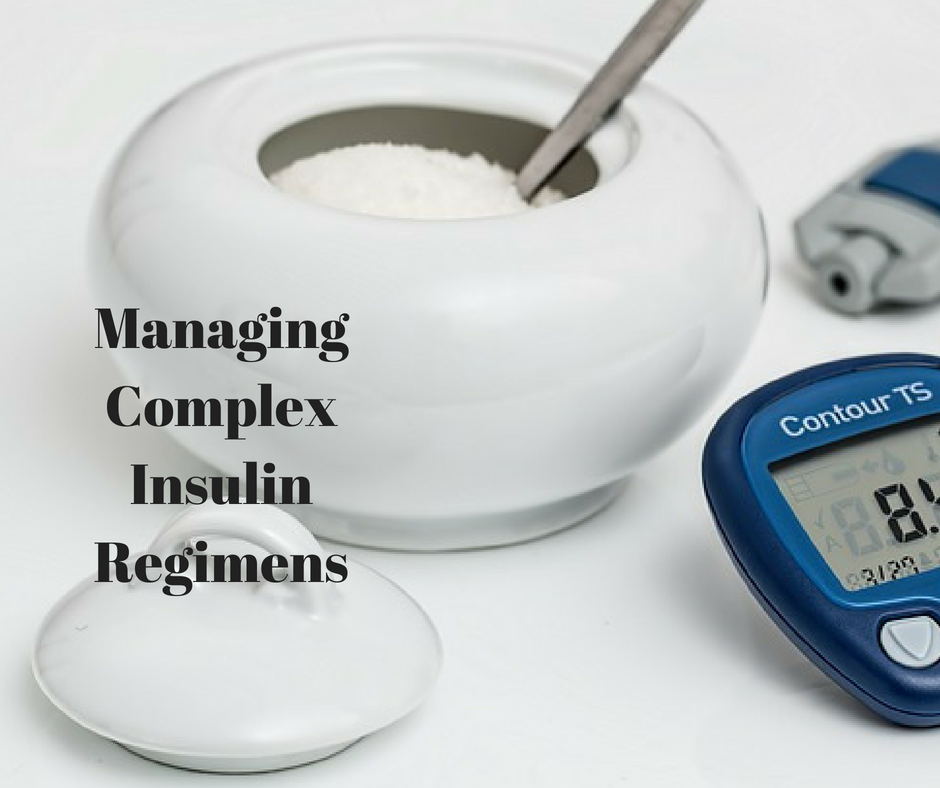Insulin is one of the highest risk medications that our patients can take. Complex insulin regimens can create confusion amongst our geriatric patients. These regimens can obviously be beneficial as well if they are done correctly. One of the challenges is trying to weigh the complexity of the regimen with the desired control of blood sugars.
Thinking about insulin and pharmacokinetics, the ideal way to manage insulin is how the body does it. Insulin is released in response to elevated blood sugars following ingestion of food. The closest we can get to mimicking the body is to use an insulin pump. This of course, is not an option for everyone.
The next thing we can do is give insulin more frequently via injection. This obviously leads to challenges with keeping our patients adherent. The more injections that you ask a patient to do, the higher the burden and less likely the patient will be able to do this.
In geriatrics, managing insulin can be a real challenge as we have to monitor for dietary, cognition, medication, and other changes that can all affect blood sugars. Having a complex insulin regimen can increase confusion and increase the likelihood of a medication error from the patient. Some of the newer agents (while unfortunately expensive) can help us get out type 2 patients to goal while hopefully allowing us to get by with less insulin and less complex insulin regimens.
Here’s a few tips on working with patients who may have complex insulin regimens.
- You have to inquire about hypoglycemia at each interaction. Hypoglycemia is incredibly scary in patients on insulin. This is particularly problematic in our geriatric patients who may have a blunted response to hypoglycemia symptoms, poor recognition of symptoms, or where this may be confused with another condition.
- Ask if they are happy with their current regimen. Many won’t be and I try to use this as a stimulus to encourage lifestyle and diet changes where possible and appropriate.
- Involve family or caregivers when possible. This allows you to educate them about hypo and hyperglycemia symptoms and also gives you another set of eyes to ensure that the patient can use the insulin safely and effectively.
- Inquire about diet and appetite. Changes here can cause big problems with hypoglycemia.
- Watch for big changes in A1C. I have a heightened awareness if I see an A1C change of a point or more. This certainly may be intentional, but big swings could be indicative of life changes that need to be followed closely.
- Simplify when possible. If you have a patient on 4 time per day insulin and they don’t eat a lot at a particular meal, this might be a good time to reassess the dose and try to eliminate one if possible.
Insulin certainly makes my top 5 high risk medications. What are the other 4? Find that here.
Love the blog? Get a free gift simply for following! Over 5,000 medication loving healthcare professional have taken advantage of this!



That is a very nice post on Insulin. Thank You very much for sharing this informative post with us.